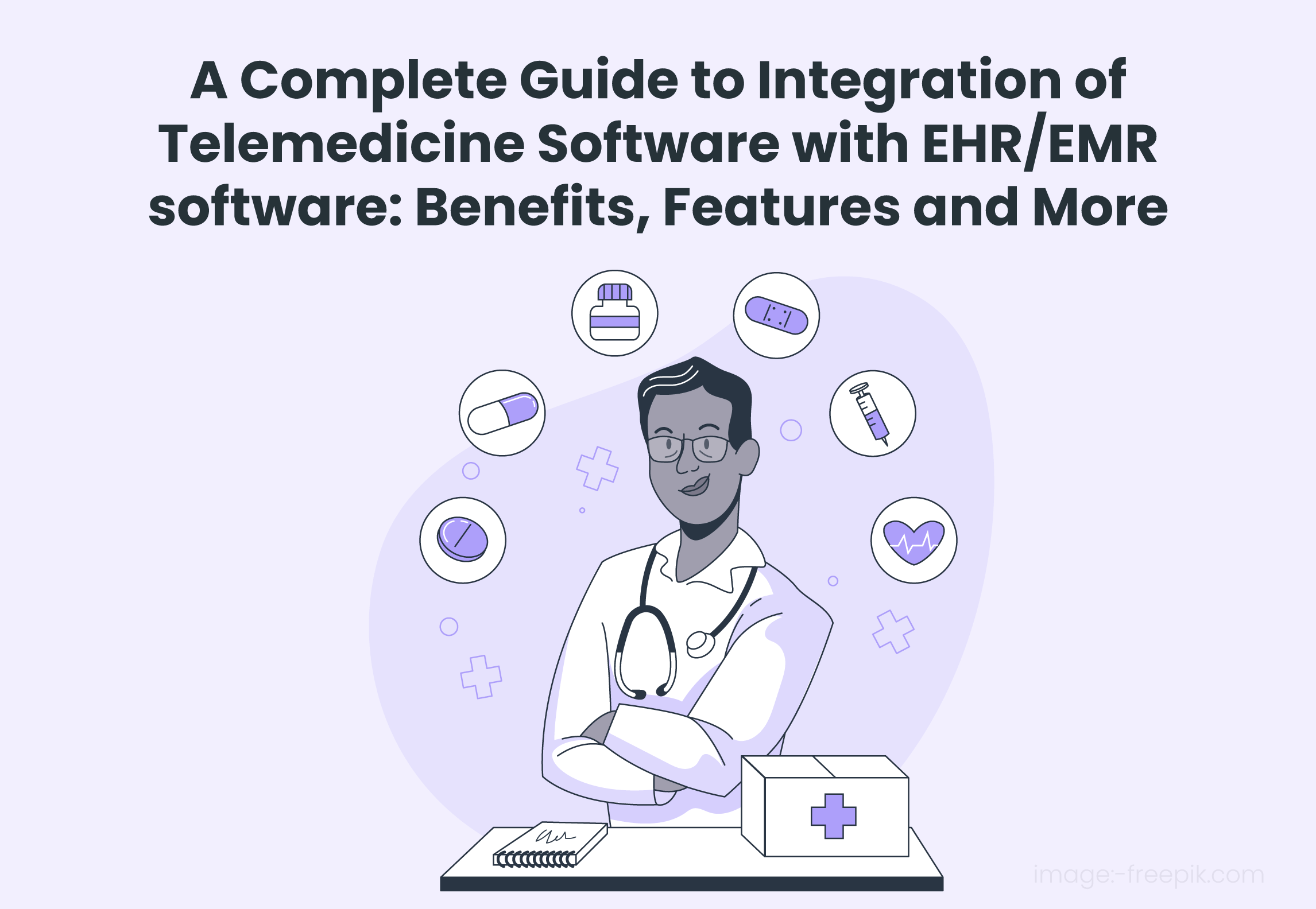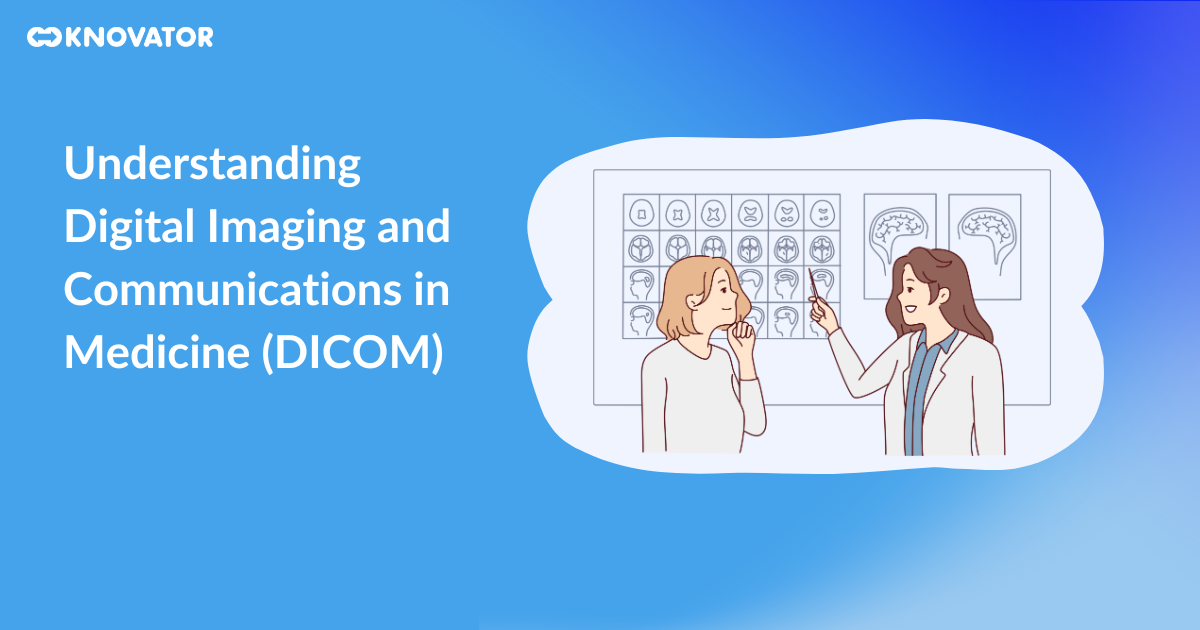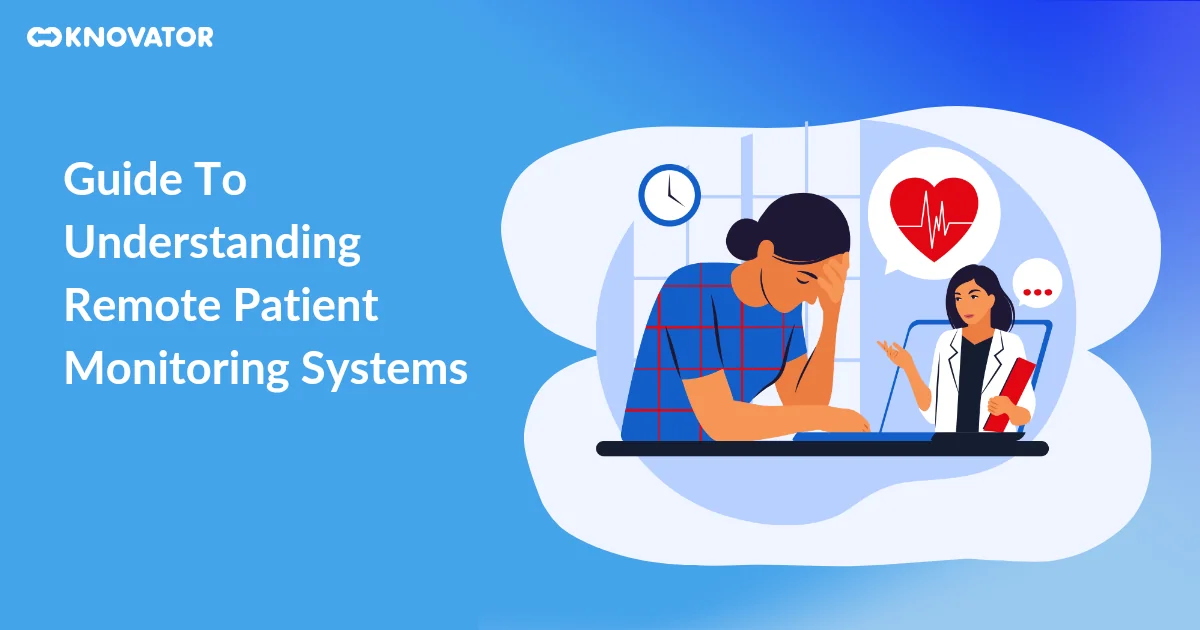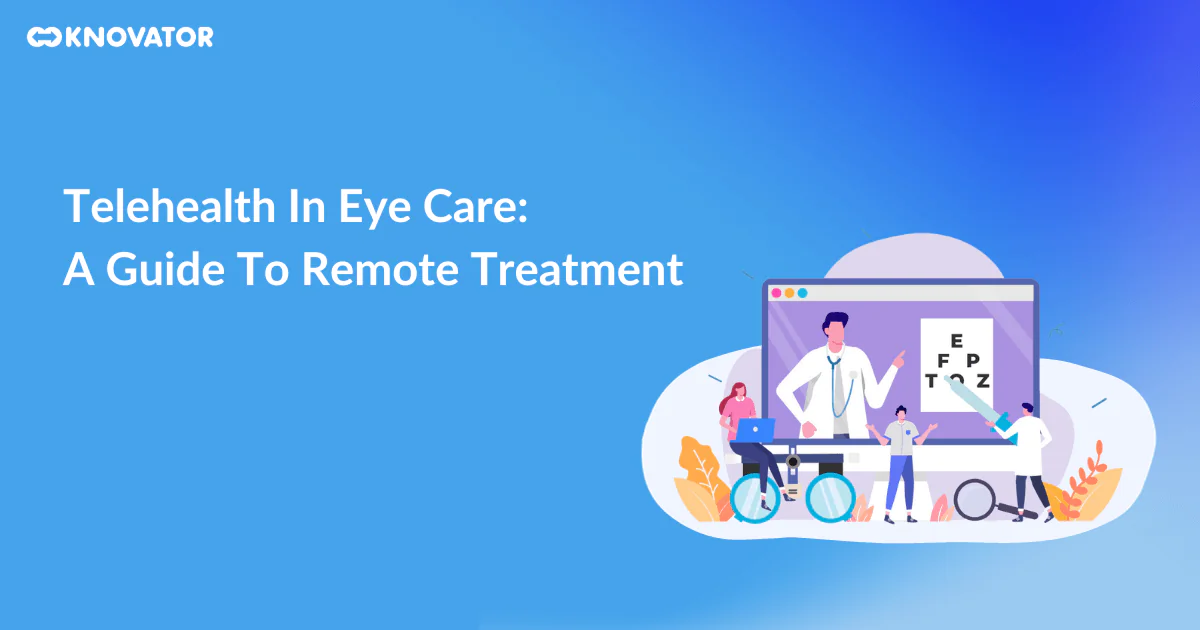Remote patient monitoring, telehealth, and care have recently gained momentum. A study shows that 84% of patients will choose a provider offering telemedicine. If you have an EHR and EMR solution, you must choose an EHR implementation service provider with experience in telemedicine software for integration purposes.
You will be surprised to know that patients and physicians interact daily via phone, email, SMS, and share prescriptions, lab results and more. If your EHR platform supports telemedicine and telehealth, it will add value to your care services. Users do not have to login to multiple systems. A centralized system with telehealth services integrated into it will save time, costs, and increase software footprints.
Let Knovator Technologies digitize your telemedicine business with EHR/EMR software.
Here are 5 major benefits associated with an EHR integrated Telehealth platform.
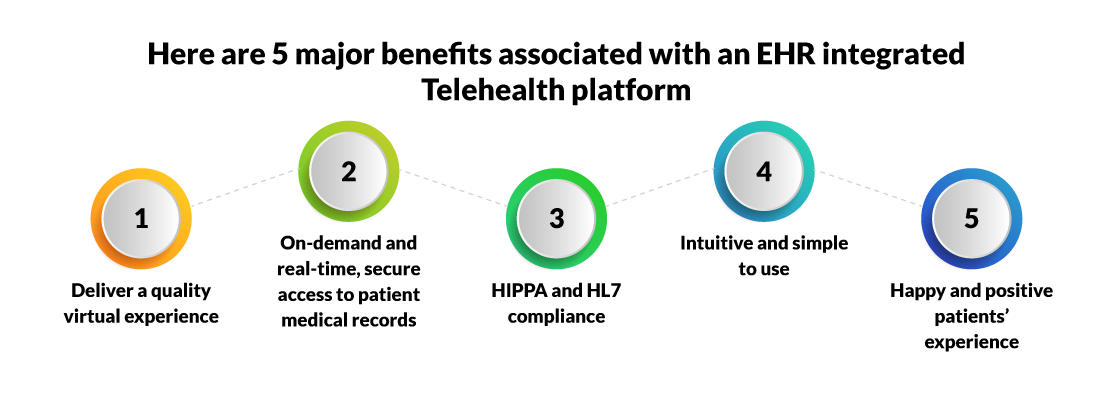
Deliver a quality virtual experience
You can build long-term relationships with your patients using an EHR integrated telemedicine platform. This way, concentrate more on delivering better health outcomes and less on virtual visits suffering from poor connections, video streaming failures, and technical complications. An EMR implementation service provider will always test all the text, video and other communication channels and ensure a seamless experience.
On-demand and real-time, secure access to patient medical records
Patients, physicians, and the admin team can access real-time patient records based on their security permissions and download restrictions. Physicians can quickly view appointments, verify a patient history, access prescriptions, and reduce the time to consult and treat a patient. On the other hand, patients can get access to their PHI data and also view lab reports, treatment papers, prescriptions, and more in one place for better health management.
Admin can send invoices, generate bills and upload documents on behalf of physicians in the system. Users’ can manage and access their information without security compromises. With a non-integrated EHR and telemedicine system, users’ have to switch to a minimum of 2 applications to access data which can lead to manual and clinical errors.
HIPPA and HL7 compliance
Telehealth software may or may not be HIPAA and HL7 compliant. If you have an EHR software that is integrated with telehealth software, it needs to be HIPAA compliant and should not allow downloads beyond the office or on desktops of users. You do not want to expose data to potential cyber-attacks and EHR software can protect it when integrated with telemedicine capabilities.
Related : Top Telehealth Business Ideas
Intuitive and simple to use
Intuitive UI and UX help patients and physicians to consume content on the web or mobile screens and fulfill their purpose in minimum clicks or touches. This feature helped immensely during Covid. An EHR implementation service provider will use the latest UX/UI controls with font size visible to users of all age groups. It will help them understand and use the app from their perspective without any directions of training.
Happy and positive patients’ experience
With a centralized EHR and EMR software integrated with telemedicine and possibly other 3rd party systems, patients’ do not have to login to different web portals or applications to access their records or schedule a video, audio appointment with doctors. They can access their records on the fly through mobile and if they book an appointment from their laptop, it will also be available on their mobile phones. They can reschedule appointments and also access updated prescriptions on any device.
Do you feel confident investing in an integrated EHR/EMR platform that can provide solutions aligned to Covid-19? Definitely, right!
However, integrating telemedicine is just the tip of the iceberg. You can build a 360 degree EHR & EMR solution that can integrate with 3rd party systems designed for different providers and practices like labs, clinical trials, durable medical equipment providers, and many more.
Now that you know the importance of EHR implementation, the next part discusses how EHR software empowers you to provide custom solutions to your healthcare business, patients and other stakeholders.
Also Read : Telemedicine App Development Services
Hire us to develop EHR software that empowers your healthcare business, patients and other stakeholders.
Third-party systems that can integrate with EHR software
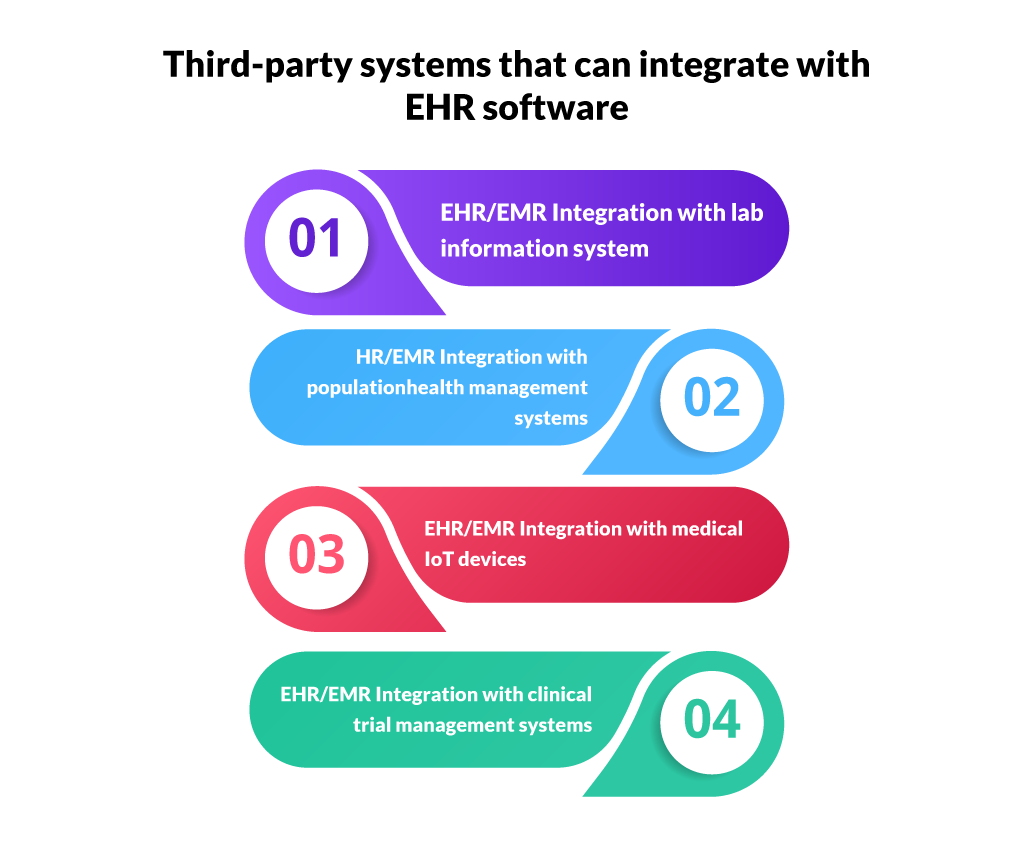
- EHR & EMR Integration with lab information system – Many labs require access to patient records for prior authorization and intake processing purposes. Labs cannot afford to build a complete integrated system. If your EHR and EMR software provides seamless integration with a lab information system, it is possible to know the medical diagnosis, clinical test codes, samples, prior authorization information, and patient information on a need-to-know or role-driven access basis.
Upon reviewing the complete information at one place, clinical and lab staff can manage administrative processes in a jiffy and avoid errors in issuing authorizations, sending test reports to patients, physicians.
With a complete history of reports, invoices, appointments available in one place, it’s a win-win situation for providers, patients, and labs.
- EHR/EMR Integration with population health management systems – Payers or insurance providers have tons of patients’ claim data including their medications, treatment, and medical history. If you integrate this information with EHR & EMR software, clinical nurses can understand patients’ conditions, and analysts can interpret and design a clinical plan for different segments of the population.
Nurses can call and follow up with patients to manage their care plans. If patients successfully follow a care plan, they will stay healthy resulting in fewer bills to providers and payers.
- EHR/EMR Integration with medical IoT devices – Durable medical equipment providers need accurate data to improve their products, manage billing, and provide better care to their customers. Today, Knovator is an EHR implementation service provider that can help you to connect all your medical devices with EHR/EMR software through the Internet of Things or IoT technology.
Device integration lets you access patient’s data that is captured from different devices directly to your EHR/EMR application dashboard. Using this data, you can make informed decisions, generate bills and send custom reports to patients.
- EHR/EMR Integration with clinical trial management systems – During trials, clinical staff create new trial projects and run analysis based on the research required. If they can import patients’ data from EHR/EMR software, they can do more live analysis before issuing further recommendations.
So, integration to 3rd party systems further advocates the use of integrated EHR/EMR software. Do you have questions regarding the features of EHR/EMR software that integrates with telemedicine?
Also Read : Benefits of Buy Hospital Automated Prior Authorization Solution
4 Key features of integrated EHR/EMR software
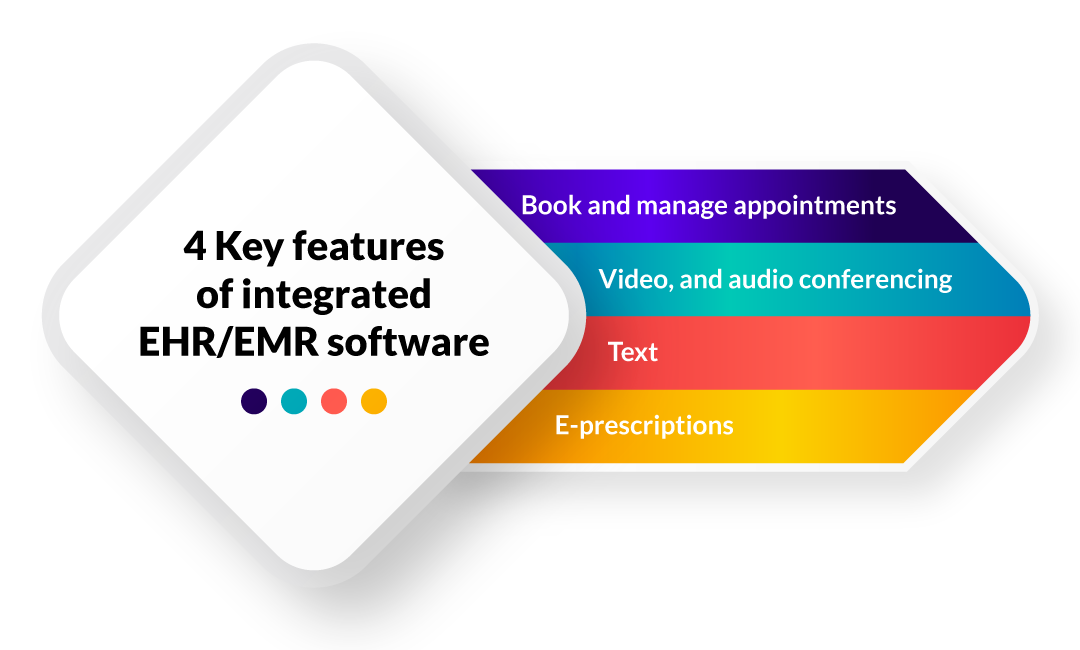
An experienced EHR and EMR implementation service provider like Knovator Technologies will ensure to include the following 4 features in an integrated medical or healthcare software.
- Book and manage appointments – Patients can view and book a physician’s appointment directly from the telemedicine software. They can search and sort doctors’ lists by location, specialty, availability, and other clinical factors. Further, physicians can accept bookings or suggest a new time. Patients can view the confirmed appointments and get automatic reminders before a consultation. Physicians do not have to worry about manually managing appointments as everything is managed automatically.
- Text, video, and audio conferencing – Patients and physicians can send text messages to each other inside the application. This helps to track consultation and download previous chats for further diagnosis. If required, patients can request an audio and video consultation. The chat interface is fully designed keeping HIPAA and HL7 protocols in mind. Moreover, users can download transcripts and attach lab results, prescriptions, etc. in the same chat window.
- E-prescriptions – Doctors can use a prescription template to issue digital prescriptions and send them to patients via chat. These prescriptions can be automatically linked during the purchase of medicines.
All the above features can be customized and designed keeping targeted audience, budget, and scope by Knovator Technologies.
Conclusion
Knovator Technologies EMR implementation services can help you get all the medical and healthcare software under one roof. You can start with integrated EHR and EMR telemedicine software and then include features related to prior authorization, patient engagement solutions, remote patient monitoring and related mobile applications. You can also hire Knovator Technologies to design a one-page site for your healthcare business explaining the features and a video tour of your software and use this article to explain the benefits. Implementing software of this scope can be expensive and time-consuming but it will improve health outcomes, patients’ retention rate, increase engagement, and build your brand.
If you’re looking for dedicated EMR implementation service, we’re your development partners. Let’s talk.
You will need dedicated EMR implementation services from Knovator Technologies to implement EHR software in an agile manner. You can improve your bottom line, streamline clinical workflow, avoid data errors, manage government regulations, and more. Let’s talk together to build a great integrated EHR/EMR telemedicine software.

